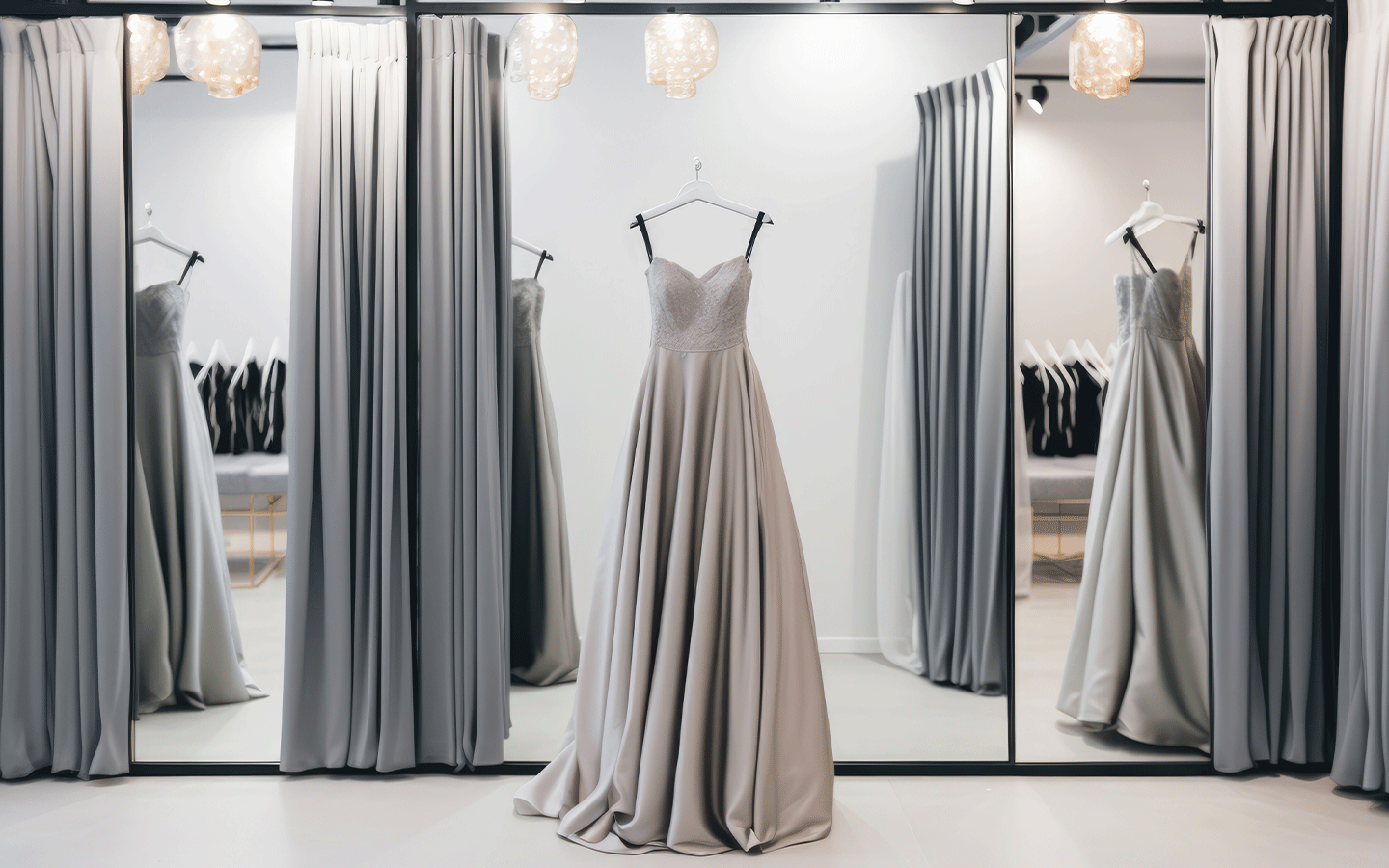Ever faced the dressing room horrors? It’s not you, it’s the dreadful lighting and design. Retail designers, let’s rethink these spaces!
Hey, you don’t really look that bad; it’s just the dreadful lighting. No, you’re not genuinely uncomfortable in that outfit; it’s just the fitting room that’s far from cosy. Every time I step into a clothing store, I remind myself of these things to avoid ruining my shopping spree.
Here’s the scenario: I spot a fabulous piece of clothing, convinced that its shape, colour, and size will look perfect on me. Then I head to the changing rooms, and disappointment ensues.

Fitting room design can be one the main key factors influencing consumers' decisions during their shopping experience
Problem Number One: Stay Away from the Spotlight (Literally!)
As I frequently notice when I go shopping, the lighting in fitting rooms is often too cold, impersonal, and glaringly bright, highlighting every single feature and turning them into perceived flaws. To make the situation even worse, some stores choose to install LED lights behind (and all around) the large mirrors in their changing rooms.
Is an array of cold colours (e.g., white, green, light blue, violet) for ambient lighting really the best choice to make customers feel comfortable trying on clothes? As we all know, fitting rooms can often tip the balance in the “buy or not to buy” drama.
@lolrylie It’s repulsive #hollistertok #fittingroom #badlighting #unflattering #offensive #dressingroom #fyp ♬ original sound - canasia’s bookshelf 📚
With this in mind, how about installing some warm, soft, neutral lighting for a more inviting and cosy fitting room experience?
Problem Number Two: Curtains
What’s the deal with fitting room curtains? Why are they so annoyingly heavy and barely floating above the floor? The most annoying part is that I can never quite close them properly, leaving the changing room awkwardly half-open.
So, how can we enhance the customer experience in stores’ dressing rooms? Design is the solution. Some boutiques are switching from curtains to doors, aiming to offer a more relaxed shopping session.
@richfits can we petition for them to replace these fitting room curtains with with something more private pleaseeee 🥲 #shoppingproblems #zara #artizia ♬ original sound - Fitnesswithkien
However, for those beloved brands that insist on using dressing room curtains, consider the choice of materials (and their transparency) and their colour shades. And please, never underestimate the curtain length—no one wants to see our feet poking out.
Problem Number Three: An Empty (Small) Room
Retail designers constantly strive to optimise space, aiming to design store layouts that maximise sales by displaying as many products as possible.
And here’s the rub: not all fitting rooms are created equal, but most are conventional, small “rooms” leaving no space for furniture like chairs, a clothes hanger, or even a small armchair.
So, how do you try on clothes during winter? You end up leaving your coat, scarf, and the entire outfit of the day on the floor—no way!
Consumers may be demanding at times, but paying attention to the space inside dressing rooms could encourage shoppers to spend more time in-store and improve their shopping experience.
Problem Number Four: How to Deal with a Formal Dress Fitting
Trying on a T-shirt, a jacket, or trousers can be a breeze. But have you ever attempted to try on a formal dress with no assistance? I have, and it was a laughable, epic moment.

Customers just need a bit of human help to navigate their (short) shopping adventures. This could help them improve their in-store shopping journey
With no shopping assistants around, zipping up the dress can be a challenge, not to mention the high probability of putting it on the wrong way around—and no, that’s not a stylist’s fashion decision.
Some might think, “If you want something done, do it yourself,” but sometimes customers just need a bit of human help to navigate their (short) shopping adventures.

